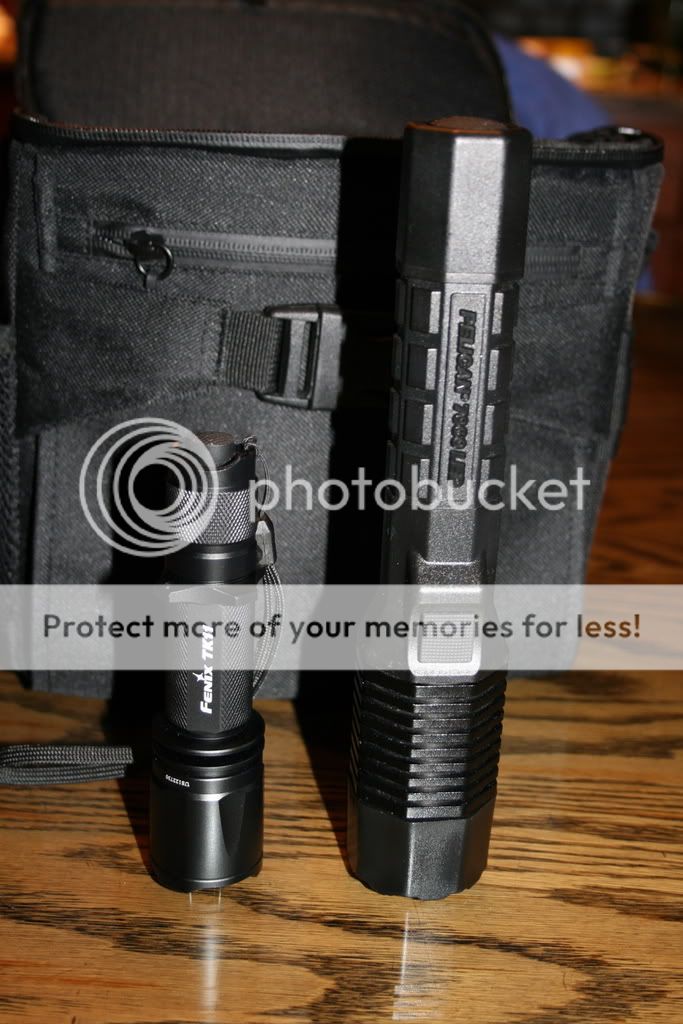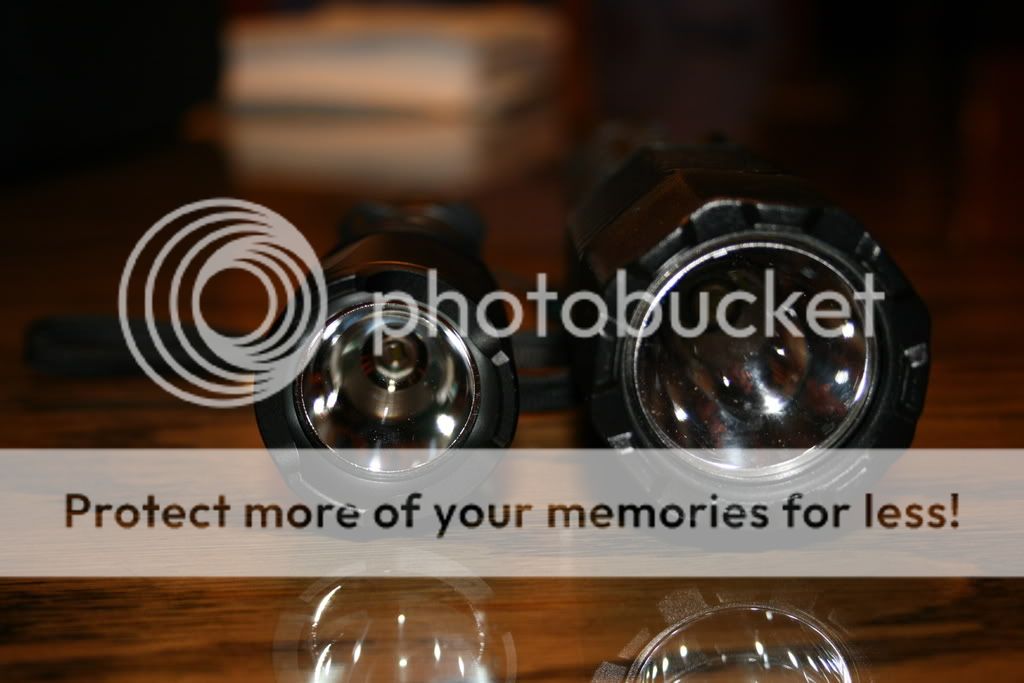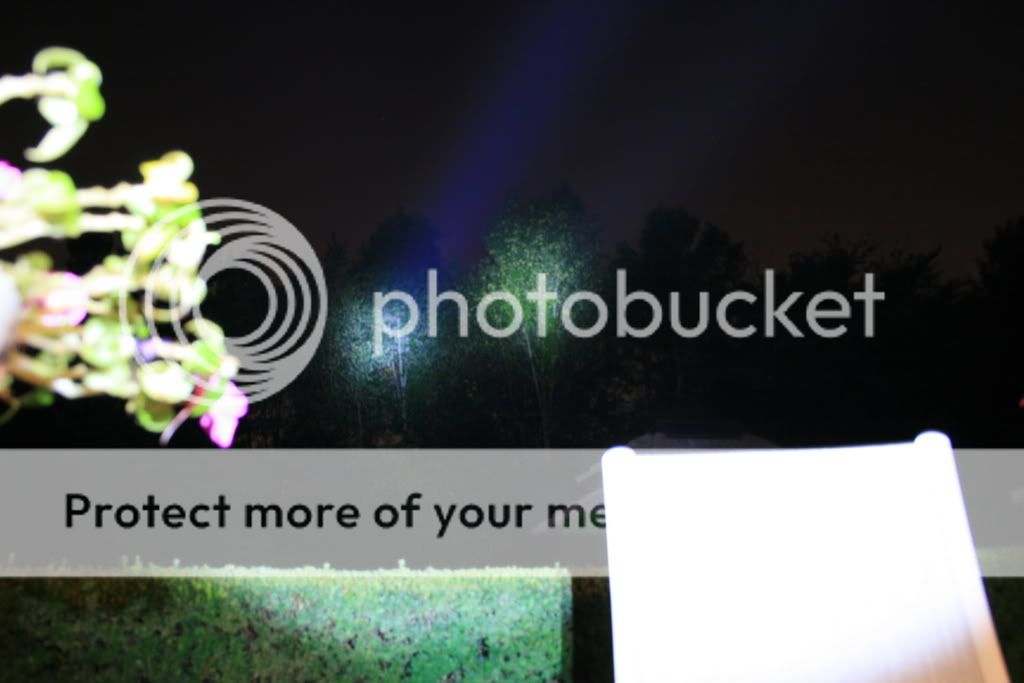applevision
Flashlight Enthusiast
Hey team, I finally got around to putting these two beautiful lights up for a head-to-head. In some other threads I had been venturing that the TK11 seemed brighter than the Pelican...and by extension, that it could likely out-throw it... the real world testing has shown this to be false. Let's have a look...
First, let's look at the two competitors, Fenix on the left and Pelican on the right:

A close look at their reflectors may shed some light on why the Pelican is so much more potent:

Now to the world!
These trees are about 170 feet away from the emitters, the bright blue Pelican beam is on the left and the softer, whiter Fenix beam is on the right:

Now a target a little over 200 feet away, here's the Fenix:

And an equally blurry image of the Pelican at the same target:

Okay, now for some shots that address spill a little bit... here's the whiter, broader spill from the Fenix on a target about 100 feet away:

And the tighter spill from the Peli:

Finally, both beamshots going up and out into the night (Pelican on the left):

In sum, these are both delightful and beautiful lights. The Fenix does a superb job in a very compact form with soft, creamy light. The Pelican 7060 however leverages its larger size and deeper reflector to out throw the Fenix, although the beam is harsher and bluer. Both are serious lights and are among my favorites! Enjoy!
p.s. Both lights were fully charged; the Peli has a battery back and I used AW's 18650 for the Fenix. The camera was a Canon Rebel and in Av mode.
First, let's look at the two competitors, Fenix on the left and Pelican on the right:

A close look at their reflectors may shed some light on why the Pelican is so much more potent:

Now to the world!
These trees are about 170 feet away from the emitters, the bright blue Pelican beam is on the left and the softer, whiter Fenix beam is on the right:

Now a target a little over 200 feet away, here's the Fenix:

And an equally blurry image of the Pelican at the same target:

Okay, now for some shots that address spill a little bit... here's the whiter, broader spill from the Fenix on a target about 100 feet away:

And the tighter spill from the Peli:

Finally, both beamshots going up and out into the night (Pelican on the left):

In sum, these are both delightful and beautiful lights. The Fenix does a superb job in a very compact form with soft, creamy light. The Pelican 7060 however leverages its larger size and deeper reflector to out throw the Fenix, although the beam is harsher and bluer. Both are serious lights and are among my favorites! Enjoy!
p.s. Both lights were fully charged; the Peli has a battery back and I used AW's 18650 for the Fenix. The camera was a Canon Rebel and in Av mode.
Last edited:

